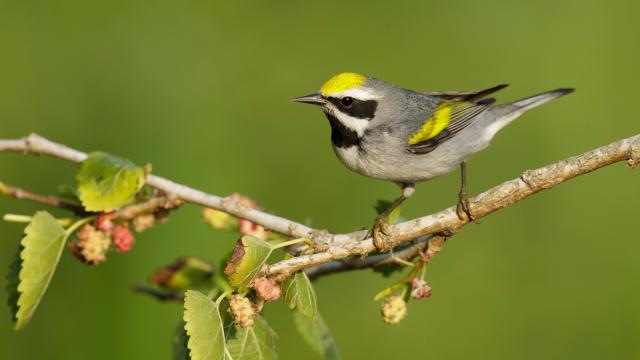America’s birds are having a rough go of things, a new report from the North American Bird Conservation Initiative (NABCI) this week has found. The findings show that many bird species in the U.S. are in decline, with nearly a hundred species losing more than half of their population since the 1970s. Without more concerted conservation efforts, the authors warn, these birds are on track to dwindle even further over the next several decades.
The report is the latest in the NABCI’s State of the Birds series, which has been published since 2009. It collects and analyses data from five long-running population surveys of North American birds. Using this data, the report tries to track changes in bird populations dating as far back as 1970 and up through 2019. The project is primarily led by researchers from Cornell University’s Lab of Ornithology.
Previous research from Cornell has estimated that more than half of known bird species (over 300 species) in the U.S. and Canada have experienced some population decline in recent decades, amounting to nearly 3 billion breeding birds lost since 1970. The new findings indicate that there are at least 70 “tipping point” species in more dire straits than others.
These birds have lost more than half of their population during that time period, and they’re projected to lose another half of their numbers in the next 50 years. These species include well-loved birds such as the Rufous Hummingbird, the Golden-winged Warbler, and the Black-footed Albatross. In addition, the report identified another 20 species that have lost half of their population since the 1970s, but which are not yet considered threatened or endangered by the federal government.
The researchers also looked at all the different types of habitats that birds call home. They found that birds were overall declining in all but one habitat — the wetlands. Birds living in the grasslands experienced the greatest declines, with a total population loss of 34% since the 1970s. Conversely, ducks were one of the few success stories, with their population increasing 34% during that same time.
The findings are in line with those from the State of the World’s Birds report released in September. That report found that the U.S. is eighth on the list of countries with the most threatened species. And while the success of wetland birds is reason to hope that bird populations can be coaxed back to health, more has to be done sooner than later, the authors warn.
“Urgent action and funds are needed to halt biodiversity loss in the U.S.,” said Jennifer Cipolletti, director of Conservation Advocacy at the American Bird Conservancy (ABC), in a statement. “Federal funding sources such as Recovering America’s Wildlife Act, and the Inflation Reduction Act, are ways that the massive gap in funding for states, territories, and tribe’s conservation programs can be filled.”
People at home can also do their own small part to keep birds thriving, according to Mike Parr, president of the ABC.
“Everyone with a window can use simple solutions to prevent collisions. Everyone can help green their neighbourhood and avoid using pesticides that harm birds,” Parr said. “Everyone who lives in a neighbourhood can bring the issues and solutions to their community and use their voice to take action.”
